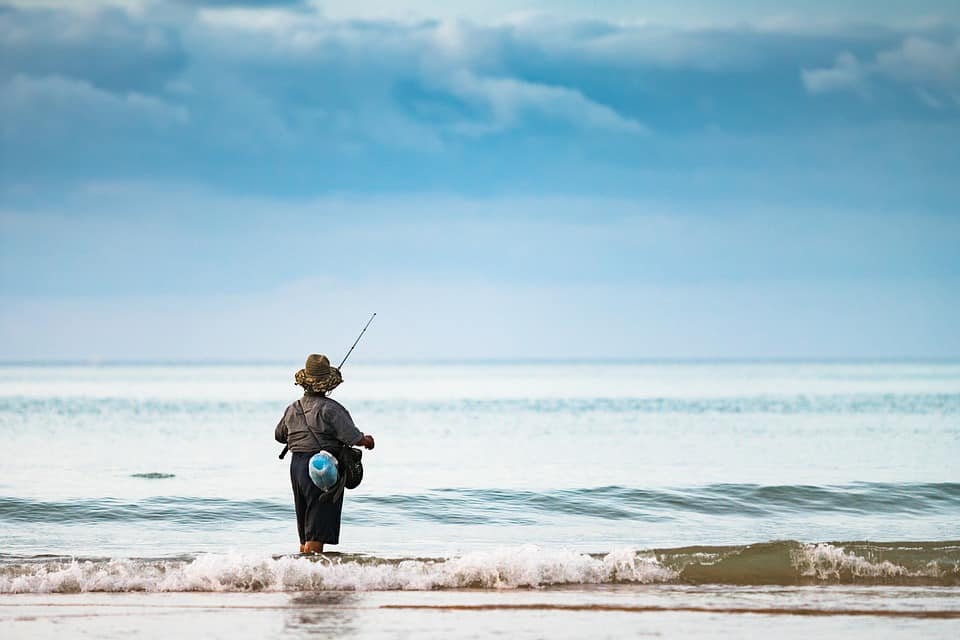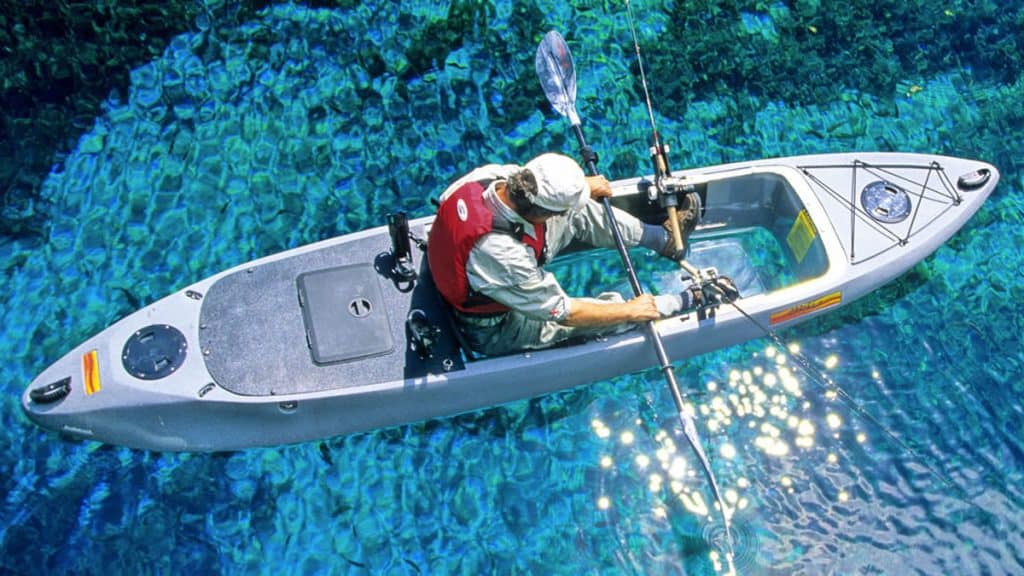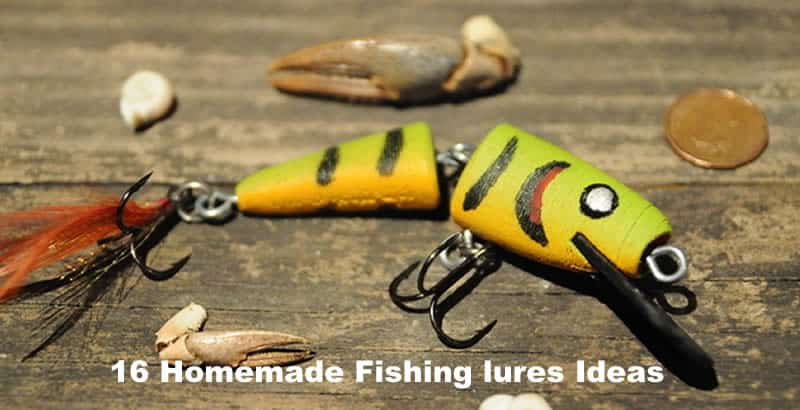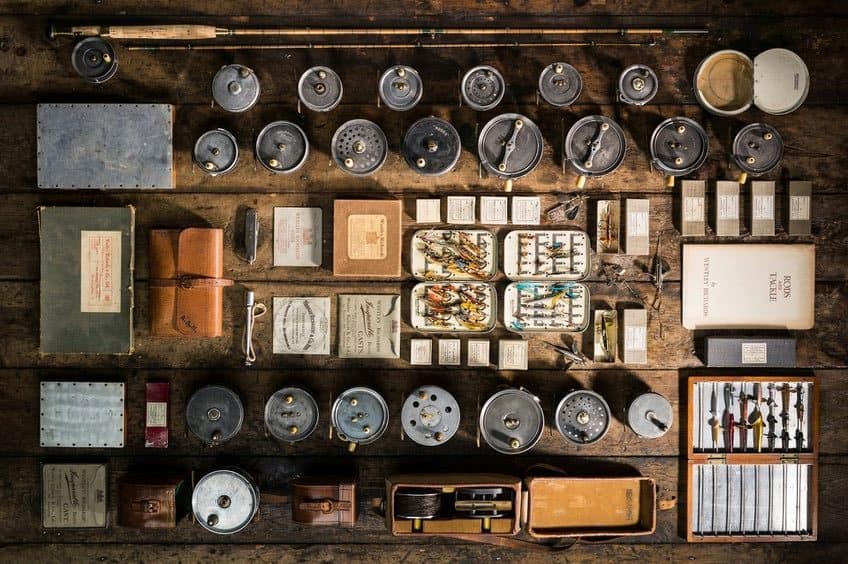If you buy via a link on this page, we may receive a commission, at no extra cost to you.Learn more
I’m planning a fishing trip; should I buy a kayak or a canoe? There is no wrong answer to that question. So helpful, right? Well, the decision of which one you should buy depends on your specific plan. For instance, to name a few, the place, how many people will be fishing at the same time, and the amount of tackle that you will bring have an impact on the decision.
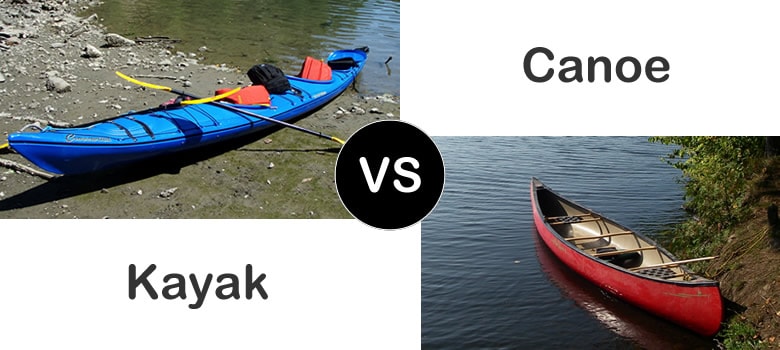
So, as you can see, it is quite a complicated question. That is why we have taken some time to summarize as much information as possible about each option. Their pros and cons, and under which circumstances you should use each one. Grab a paddle and row with us!
Understanding the Differences
While both canoes and kayaks have the same purpose, they both achieve it in different ways. So, to highlight the difference between them, we will be reviewing some relevant features like construction, weight, mobility, comfort, capacity, and stability, among others.
Canoes
For a fixed-length, canoes are bigger than kayaks. Plus, they have a fully open design and are pointy at either end. Therefore, they can carry more weight than kayaks.
These boats are remarkably old. Their origins trace back to Europe and Asia, where people used to make them by making holes inside the trunk of a tree.
Construction and Design
Modern-day canoes either have a plastic, polycarbonate, and fiber construction. Some people even use lightweight metals to build this type of vessel. Regardless of the material, all canoes look alike and have the same sections.
All canoes have a large pole in the middle known as the yoke. It is thick and has to be strong enough to enable you to carry the boat. On either side of the yoke, you have two extra poles: The thwarts. They are smaller than the yoke, and their mission is to keep the boat stable. Depending on the length of the canoe, you can have more than two thwarts.
You have the seats next to either thwart. They are either small planks or poles with strips of fabric in between fixed to either side of the boat. The former style is durable, but the latter is more comfortable.
The rear end is known as the stern, while the front-most section is called the bow. Either one has a similar shape. The front design is particularly important as it is the first section that comes in contact with the incoming water. Therefore, it has to be as sharp as possible to cut through the incoming water. As a result, the bow is slightly sharper than the rear.
The stern section is responsible for a smooth glide and reduces the turbulence as you paddle your way through the water.
Lastly, we have the hull, which is the bottom of the canoe. Its design has a direct impact on performance. For instance, the ‘V’ shape, which is the most common design, makes the boat more maneuverable at the expense of stability. In contrast, the flat hull has superior balance but poor maneuverability. Plus, the latter is slower than the ‘V’ shaped.
Propulsion and Movement
Initially, single paddles were the primary means of propulsion. So, to move the canoe in a straight line, you must take turns to paddle on either side. Alternatively, you can use two single paddles at the same time. It is very exhausting and tricky in the beginning.
Another option is to bring another angler with you. This way, each one will have a paddle to row. Bear in mind that each one has to row at either side of the boat.
You can also purchase a trolling engine, so you don’t have to row. However, we suggest bringing a paddle just in case the engine runs out of batteries or fuel.
One thing that differentiates a canoe from a kayak is that the latter is faster; thus, if you are looking for speed, you should go for a kayak.
Stability
Fishing implies movement. Therefore, stability is an important factor in the decision on which one you should buy. You don’t want to flip the boat while you muscle with the fish or cast your rod.
Moreover, the waters have an impact on stability. For example, kayaks are better for rapid rivers and stormy waters, while canoes are preferable for lakes, creeks, and calm waters.
So, how steady is a canoe? Because you sit a little farther from the water, the center of mass is higher. Therefore, it is quite easy to fall off the boat, especially if you stand up and move away from the center. However, it is easier to muscle the fish in a canoe as you have more room to move. Plus, as long as you don’t get too close to the edge, the canoe will remain in its position without a problem.
The keyword in canoe fishing is weight distribution. Moving to close to the edge moves the center of mass to that side. Ergo, unbalancing the canoe and increasing your possibilities of falling over.
You can purchase a canoe with a wider hull to increase its balance. Alternatively, you can add more weight to move the center of mass closer to the boat. However, some people like to travel light. So, another option is to anchor the canoe.
If you are fishing with a companion, he/she should remain seated to move the boat to counterbalance your movements.
In conclusion, canoes are stable as long as the water isn’t too rough, or the canoe is extremely unbalanced.
Portability
The most portable canoes you can find in the market are inflatable. They are easy to transport and extremely light. However, they aren’t so durable.
Most canoes are either 13 to 18 feet long. Of course, the larger it is, the heavier it gets. Thus, the harder it is to transport it, especially during long hikes through treacherous terrain.
The portability doesn’t have such a high impact if you are planning to transport the boat by car. And then carry it to the water.
Capacity
The carrying capacity depends on how large the canoe is. Naturally, bigger ones can carry more weight. Furthermore, you can transport larger equipment in a canoe. Plus, everything is within reach, and it is pretty easy to move things around.
So, if you are planning to bring a lot of fishing tackle, you should go with a canoe. Bear in mind that more weight also means mode paddles to get to the same place.
The downside is that the cargo is likely to get wet. But nothing that a water-proof bag can’t solve.
Still, you should carefully plan the cargo layout as it affects boat stability.
Types of Canoes
All canoes have the same basic construction we reviewed before. Nevertheless, depending on the task, some models are better than others. So, let’s see the different types of canoes that you can find and under which circumstances you should use them.
Expedition Canoes
These 18 to 20 feet canoes are among the largest you can find in the market. Expedition canoes are long but not as wide as other craft of this family.
They have a sturdy built and can carry a considerable amount of weight. Plus, they are easy to control. You can use it on both calm and moderate rough waters.
As the name suggests, these are the ideal canoes for long trips through the water, and, of course, fishing.
Recreational Canoes
The market is full of this type of canoe. They are the easiest to paddle with and can accommodate up to 4 passengers.
Recreational canoes have an average of 17 feet from stern to bow. And they are good for a wide range of activities such as fishing, sightseeing, and short trips around a lake.
This type of canoe has a plastic or aluminum construction and is more stable than expedition canoes.
Racing canoe
More contact between the craft and the water means more friction. Ergo, less speed. So, if you want to do something fast, you should go with a racing canoe.
These are long but narrow canoes that look a lot like a kayak but with an open deck. Racing canoes sacrifice space and carrying capacity in favor of speed and maneuverability.
Whitewater Canoes
Like racing canoes, these are shorter than recreational canoes. The design favors speed and maneuverability, especially in rough waters like rapids.
Whitewater canoes feature flotation panels to overcome the extra weight of the water that gets inside the deck. They aren’t as stable as the other models. Thus, we don’t recommend using them for fishing.
Kayaks
Typically, kayaks are slimmer than canoes. Thus, more maneuverable, lighter, and more portable. The main drawback is that they lack space, and most kayaks are one-person only.
Construction and Design
Most kayaks have a plastic, PVC, rubber, fiberglass, Kevlar, or aluminum construction. They are smaller and not as wide as canoes. Thus, as you would expect, they are lighter.
But the construction material is not the only difference. At first glance, you will note that kayaks have covered decks with one or two openings. Inside each one, you have the cockpit and the seat where you can either sit or kneel. Plus, kayaks have neither yoke nor thwarts. Like canoes, kayaks have pointy ends, which have the same name as before.
As you can see, only your lower body is inside the kayak. Although there is a version called sit-on-top, in which the seat is above the deck rather than below it. As a result, all your body is outside the kayak. It might be more comfortable this way, but it has its drawbacks. For instance, all your body will get wet, and they aren’t as stable as conventional models.
Along the deck, you will find crossed bungee cords. You can use them to store some small pieces of equipment. Some kayaks have cargo hatches at either side of the deck. They are completely waterproof and have enough room for the essential tackle.
Most kayaks have a ‘V’ shaped hull. However, some have a more aggressive shape. Such boats sacrifice stability in favor of speed.
Propulsion and Movement
Like canoes, kayaks use a single paddle with a blade on either side. It takes more time to master the technique. But once you do, you will notice that it is easier than paddling in a canoe. Plus, you need less strength because you take advantage of the momentum as you row.
Since kayaks are lighter and have an ergonomic design, they can develop higher speeds. Plus, as you are sitting inside the kayak, except on sit on top models, you can use your whole core to move it. It is one heck of an exercise!
Some newer models have a pedal system as a means of propulsion. Here, you use your feet instead of your arms to move around the water. The obvious advantage is that your hands are free, and you don’t have to change between the rod and paddle each from time to time. So, you can fish while you move. Sadly, kayaks with a pedal system are more expensive than paddle-propulsion ones.
As happened with canoes, you can attach a trolling motor to the back of the kayak. This way, you don’t have to muscle your way through the water.
Stability
Kayaks sit closer to the water. Ergo, the center of mass does al well, which means that it is more stable, especially in rough waters. Plus, you can easily flip them back after a capsize, a thing that doesn’t happen with canoes.
However, you have less room to maneuver your rod, which might be a problem if you happen to hook a big fish. Hence, it will be harder to land the fish. That is another advantage that the pedal system has. You can control the rod while moving the kayak to favor your fight against the fish.
Some kayaks are wider, which increases stability. Plus, the lack of room in a kayak compels you to keep the weight organized and evenly distributed. A well-balanced craft is important for keeping it stable.
So, in conclusion, kayaks have better overall stability. You can fish in both calm and turbulent water, making it a much more flexible watercraft. But, the lack of space makes its stability a little fragile.
Portability
Kayaks are more portable than canoes. They are light enough for a single person to carry it through long hikes.
Normally, you can find kayaks from either 10 to 20 feet in length. The longer ones can accommodate two cockpits and have more carrying capacity. Of course, they are less portable. But two people are more than enough for the task
Capacity
Since kayaks are completely closed, except for the cockpit, they have less storage space. The advantage is that the hatches are waterproof. So, everything that you store inside them will be nice and dry all the time.
Additionally, kayaks can hold up to 2 passengers, while up to 4 passengers can use the same canoe.
Types of Kayaks
Were you overwhelmed by the different types of canoes? If so, you should take a seat. Because you can find a lot of different types of kayaks. While all of them look alike, each one has a set of special features. This way, you can choose the best kayak for you.
Recreational Kayaks
Like canoes, recreational kayaks are easier to use than the other types of craft in this family. Plus, they have more stability.
With an average length of 10 feet, these are the most common kayaks you can find.
Sit on Top Kayaks
As the name suggests, you sit on top of the deck rather than inside it. These are a little more unstable. But are easy to use.
This type of kayak is ideal for warmer conditions. The downside is that your entire body will get wet, and you can’t use it on rapids.
Fishing-wise, these types of kayaks offer you the possibility of standing up while fishing and have slightly more room to move.
Racing Kayaks
Measuring between 17 to 36 feet long and are remarkably slim, these kayaks are what we call speed demons.
Racing kayaks sit very close to the water and have a hydrodynamic style. However, they are difficult to control. So, many have a pedal rudder you can use to control the direction.
We don’t recommend using such crafts for fishing. They lack space for gear and stability.
Touring Kayaks
These are a little wider and shorter than racing kayaks. Still, they can develop amazing speeds without sacrificing stability.
Touring kayaks have storage compartments along the deck. We recommend using these for long journeys rather than fishing.
Whitewater Kayaks
Being short and wide, they are easy to control and paddle. Plus, their buoyancy makes them ideal for rapid and extremely turbulent water, but not for fishing.
Sport Kayaks
Kayaks’ popularity is quickly rising. People use them for a wide variety of purposes such as diving, fishing, and competitions.
As a response, many companies started to make sport-specific kayaks. Here we can find fishing kayaks. They already have some of the necessary equipment, such as in-built coolers, rod holders, and watertight hatches.
How is Fishing from a Canoe or Kayak?
Fishing from a riverbank, dock, or shore is fun and all. But grabbing a small boat and going far away, to those sweet spots where nobody else goes has no match. Plus, there is something primitive and exciting about fishing from a small vessel just as our ancestors used to do.
With both canoes are kayaks you will be able to go far away from the busy places and cast your rod in calm water only surrounded by nature.
However, since kayaks are smaller and more maneuverable, you can make your way to narrow creeks and highly covered waters. But, let’s stir back to more pressing matters; how is fishing in each one?
Canoe Fishing
Fishing isn’t easy while you are on land on a large boat. So, it is even harder to fish from a canoe or kayaks. And you should know by now that kayaks are more stable than canoes.
However, canoes have more room for you to move, which is an advantage when fighting massive fishes. Additionally, canoes are better if you like to fish with another person.
Furthermore, you can take more tackle and store more fish on your canoe; this makes your fishing trip more flexible and enjoyable. You can even find canoes specifically designed for fishing. These models have in-built coolers for fish, rod holders, and other modifications to make fishing a lot much easier.
As you sit high above the water level, you will be able to see farther. Plus, you are more likely to detect most of the movements, which is especially helpful when it comes down to discovering where the fishes are.
Casting is also easier in canoes. You can stand up and use most of your body to cast the rod. As a result, you can perform longer casts and use long poles to do so. Additionally, because the deck is open, you can switch faster between the rod and the paddle.
Sadly, nothing is perfect, maneuvering with a canoe is extremely hard, especially if you are alone. And, because of their size, you can’t get too close to fish. However, this is not much of a problem since, as we said before, canoes allow you to perform longer casts.
Why Canoe Fishing? Pros of Fishing from a Canoe
- More carrying capacity: You can take more equipment and people with you in your fishing canoe.
- Comfortable: As canoes have more space, they are inherently more comfortable. You can stand up and spread your legs after a long session and then sit back again. As a consequence, you can fish longer without your legs getting numb.
- Durable: Canoes have a long-lasting construction. Plus, they are sturdy and can withstand certain abuse.
- More room to maneuver: Since canoes have an open deck construction, you will have more room to move around when casting or fighting a fish. Plus, it is easier to switch between your rod and paddle.
Cons of Fishing from a Canoe
- Heavy: Sturdiness, more room, and carrying capacity come with a price: weight. You need at least two people to carry a canoe. And this doesn’t include the equipment. Thus, if you need to engage in a long hike to get to your fishing spot, you are better off with a kayak.
- Lack of maneuverability: Since canoes are bulky, they are harder to control and move, especially if you are fishing alone. As you might expect, the longer the canoe, the less maneuverable it is.
- Not suitable for rapids: Canoes construction makes them unable to handle rough waters. They are slow, bulky, and difficult to stir.
- There are not so many options in the market: Sadly, you won’t find too many alternatives in the market for a fishing canoe. But, if you are willing to take some time and money, you can rig the canoe by yourself.
Kayak Fishing
Kayak fishing has experienced tremendous growth in popularity. That is the reason why there are so many different models in the market today. Some of which are tailor-made for fishing. They are wider in the middle section, enhancing the stability and increasing the space. As a result, you can stand while you cast or reel the fish in. Additionally, wider kayaks have more carrying capacity. So, you can take more equipment with you.
Still, kayak fishing feels more restricted than fishing in a canoe. But this doesn’t mean that kayaks are worse for fishing. All that you need to do is to adapt to what you have.
Kayaks are for a stealth approach. You can get closer to the fish without spooking them. So, there is no need to excessively long casts or to use extremely long poles.
Plus, kayaks are better if you like to go fishing on your own with no companions. Why? Well, it is easy to move around with a kayak. Besides, since these are lighter watercraft, you can easily carry them on your own. So, if the lake or river is far away from the road, taking a kayak will make your life notably easier.
Why Kayak Fishing? Pros of Fishing from a Kayak
- All-purpose stability: Yes, we know that capsizing a kayak is easier than turning a canoe. But, since the kayak center of mass is closer to the water, it has better overall stability. Plus, it is easier to counterbalance any movement.
- Highly portable: Kayaks are remarkably light. You can easily carry one without any help. Of course, this depends on the total weight of your gear. But, there should be no problem as long as you pack light.
- Fast and smooth: Kayaks are narrower than canoes. Therefore, there is less contact between the hull and the water. Thus, reducing resistance. As a result, you can cover longer distances in less time.
- Suitable for all types of water: From a lake to a rapid river, kayaks can cope with both.
- Superior control: Because you ‘wear’ kayaks, you can use all your core to move the craft, all your body will be sore afterward. That is the price you must pay.
- More options to choose from: The market is thriving with kayaks. You have different lengths and models to choose from. You can even find special kayaks just for fishing!
- Waterproof compartments: The kayak hatches keep the water where it belongs, even if the kayak turns upside down.
Cons of Fishing from a Kayak
- Hard to master: Although it is easy to maneuver in a kayak, learning how to do it takes quite some time. Plus, it takes more time to get on and off; unless you buy a sit-on-top model.
- Uncomfortable: You have to sit and then fully stretch your legs. It is quite hard to keep this position during a prolonged time. Plus, your legs are likely to get numb.
- Lack of room: Because they lack the open deck design, kayaks can’t carry as much tackle as canoes. Plus, since they are smaller, they can’t carry too much weight. As a result, you can travel with neither heavy gear nor long poles.
Moreover, most fishing kayaks are one person only. And, the lack of room also affects the way you cast and fight with the fish. Sure, in some kayaks, you can stand and all. But you can’t move too far from the starting position. It takes superior rod abilities to land a massive fish in a kayak.
Which is Better? A matter of circumstances
As we said in the beginning, the answer to the question of which one is better depends on the situation you are in. Initially, both are good crafts. But, as any tool, canoes, and kayaks have specific usage. So, to help you with your decision, we have identified several different scenarios and choose which boat is the best.
Fishing Solo, or with another Angler?
Some anglers like to fish on their own, with only their rods as a companion. If you are one of those, you should go for a kayak. They are lighter, which means that you won’t need an extra set of hands to carry it to the water.
You won’t have such a hard time controlling the kayak once you are in the water. Yes, sure, it is harder to master the technique. But once you do, everything will go swimmingly.
The downside is that you have less space to maneuver, and it takes more time to switch between the rod and the paddle. Buying a rod holder or a kayak with a pedal system should solve this problem.
However, if you like to fish with someone, or you like to bring your dog with you, you must go with a canoe. Both will have more room to move, and the extra set of hands will be helpful to carry the weight of the boat and the equipment.
Besides, if you like to bring every single hook, line, and lure that you have, a canoe is your best bet. They have plenty of space and you won’t feel overwhelmed by all the equipment.
Lake, Creeks, or Rapids?
As should be obvious, where you are fishing has a high, or maybe the highest, impact on which craft you should buy. As we previously said, kayaks perform well under a wide variety of conditions. But they have no match in rapid waters. They are more stable, and you can easily apply any countermeasure to stay afloat.
Besides, their easier control and slim design enable you to make your way through narrow passages.
However, you can choose a canoe if you wish to fish in a lake or less turbulent waters. They are stable enough for you to stand up and move a little to cast, reel the fish in, or change your position.
Long Fishing Sessions
Are you planning to stay fishing for a long time? If your answer is yes, you should go with a canoe.
They have more space for you to move and bring all the goodies you need for the trip. Plus, you can stand up and sit down whenever you want.
Is Fishing the Main Attraction?
Are you planning to roam the waters and choose different places to set camp each day? If so, you are likely to carry a lot of gear, such as a tent, chairs, and some rods. In this case, a canoe is your best bet. It has the necessary space to accommodate all your gear. Plus, you can go fishing with your buddies once you set camp.
Price
There are a lot of affordable canoes and kayaks models in the market. Normally, kayaks are cheaper than canoes, but not by much. Therefore, the price is more like an extra advantage rather than a decisive factor.
Inflatable canoes and kayaks are extremely cheap. The downside is that they have fewer applications and don’t last as long as hard canoes or kayaks.
Are You a Seasoned Angler?
You might be thinking, why is this even important? Well, you should know by now that fishing in a canoe is easier than fishing in a kayak, especially for a beginner.
The reason is simple; you have more room in a canoe than you do in a kayak. Therefore, the former is the best option if you don’t have solid rod skills.
Final Thoughts
Canoes and kayaks are both good options for fishing. Still, depending on the situation, one could be better than the other. Therefore, plan carefully before any purchase as is the only way to get the best value for your money.
In short, canoes are like a family van. They have lots of space for people and cargo. Plus, they are comfortable, easy to use, and reliable. The downside is that like a van, a canoe is slow and lacks maneuverability
Alternatively, kayaks are like a sports car. They are fast, stable, and have everything you need for your adventures. But, they are harder to use, at least for the first time and lack the space of a van. Therefore, you can’t take as much equipment or buddies with you.
We hope that, with this analogy, we could ease your decision. Please, feel free to share your thoughts with us and which one is your favorite.

